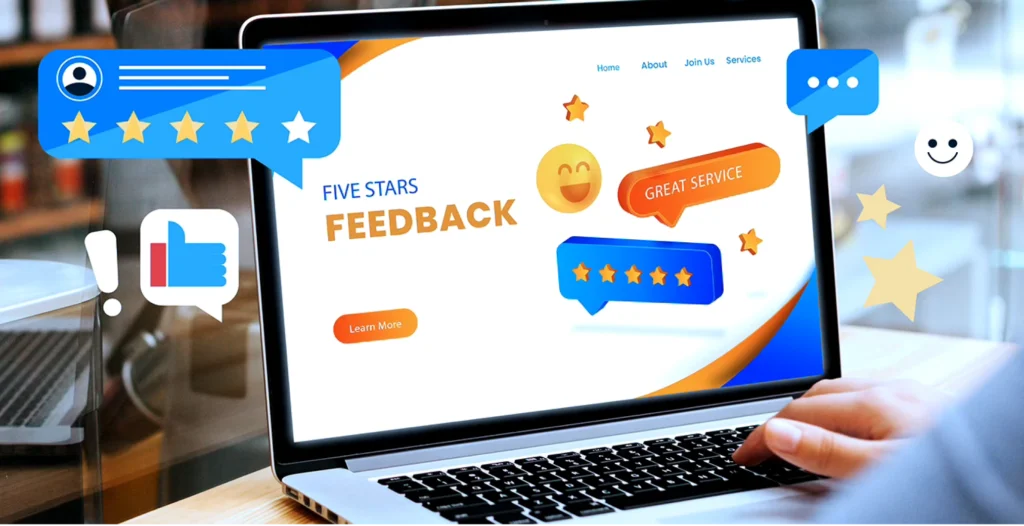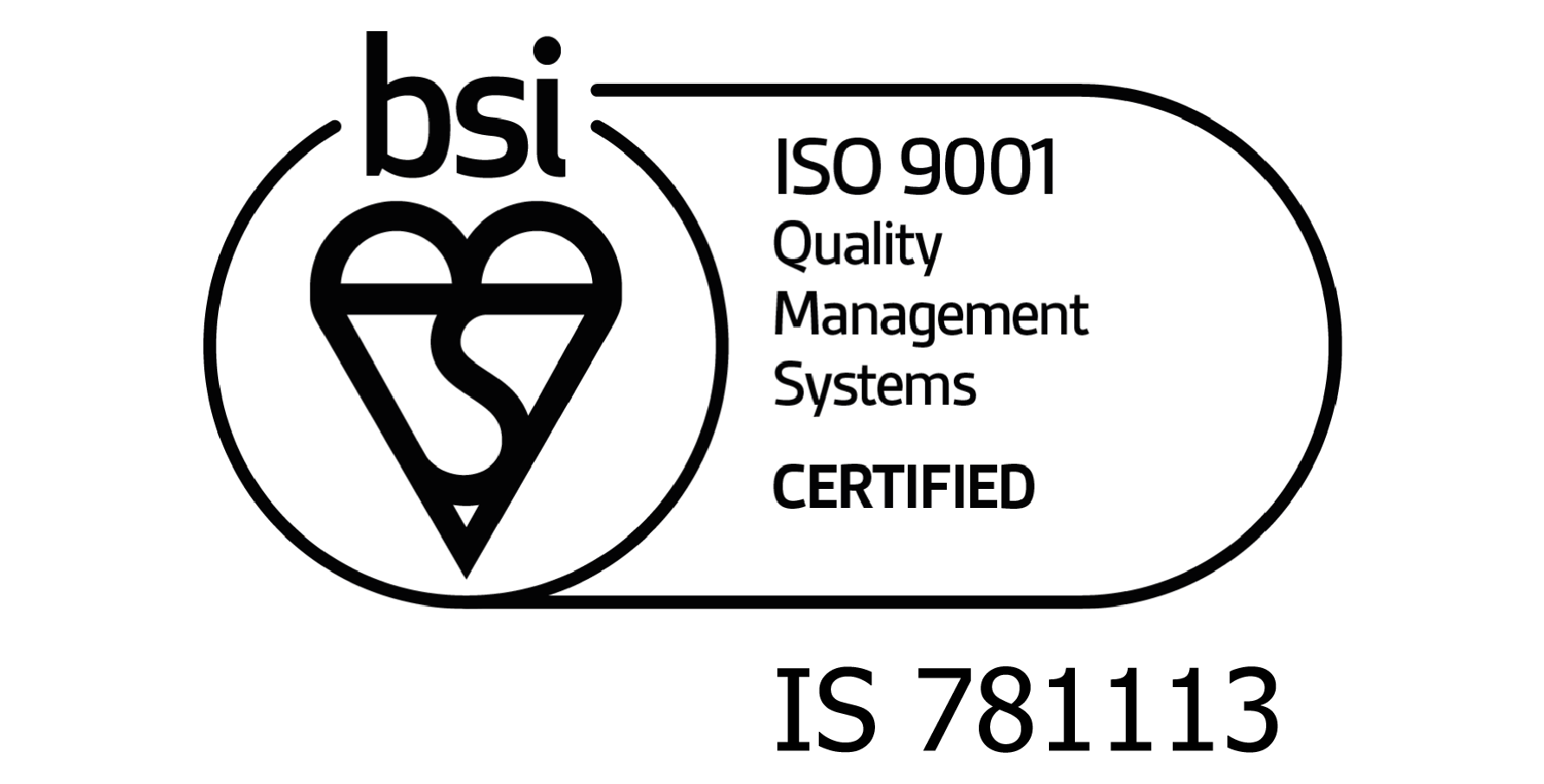

How to capture customer data and use it efficiently?
Data is the gold of the 21st century. Customer data-supported marketing is more important today than ever before. Why? Because it allows companies to communicate directly and specifically with their customers. The days when broad, scattered advertising messages sufficed are over. Today, customers expect communication tailored to their individual needs.
However, with regard to the strict data protection guidelines in Germany, many questions arise for companies. Our blog article guides you through the entire process of “capturing customer data” with a 6-step guide: from collection to storage and profiling to the effective use of this data in marketing and monitoring success.


The essencial in Brief:
- Companies should now capture customer data in compliance with GDPR for efficient marketing and to provide personalised customer experiences.
- Each step is important and requires expertise – from collection and storage to profiling and analysing customer data.
- For this reason, working with a professional service provider like Teavaro for capturing customer data is recommended.

Customer data is captured for marketing because knowing your customers enables personalised customer communication – and both your customers and you benefit from this. Imagine having a mirror that not only shows you who your customers are but also what makes their hearts beat faster. With this mirror, your marketing becomes a targeted journey where you no longer grope in the dark but specifically address, excite, and motivate your customers to purchase.
If you truly know your customers and their purchasing intentions, are your marketing messages no longer shots in the dark, but tailored gifts that your customers truly value?
What types of customer data are there?
Customer data is the key to understanding your customers. From basic information such as name and age to more complex information such as purchasing behaviour and online interactions, each type of data offers a new perspective on your customers.
Customer data is captured for marketing because knowing your customers enables personalised customer communication – and both your customers and you benefit from this. Imagine having a mirror that not only shows you who your customers are but also what makes their hearts beat faster. With this mirror, your marketing becomes a targeted journey where you no longer grope in the dark but specifically address, excite, and motivate your customers to purchase.
If you truly know your customers and their purchasing intentions, are your marketing messages no longer shots in the dark, but tailored gifts that your customers truly value?
What types of customer data are there?
Customer data is the key to understanding your customers. From basic information such as name and age to more complex information such as purchasing behaviour and online interactions, each type of data offers a new perspective on your customers.

- Zero Party Data is like an open book that your customers voluntarily hand over to you. It includes information that customers share directly and consciously, such as preferences, purchase intentions, or personal feedback. They are the gold standard in terms of accuracy and relevance.
- First Party Data refers to data that you collect directly from your customers, for example, through interactions on your website, in your app, or during customer contacts. A sensible First Party Data strategy is more important than ever in times when Third Party Cookies are becoming inaccessible.

- Zero Party Data is like an open book that your customers voluntarily hand over to you. It includes information that customers share directly and consciously, such as preferences, purchase intentions, or personal feedback. They are the gold standard in terms of accuracy and relevance.
- First Party Data refers to data that you collect directly from your customers, for example, through interactions on your website, in your app, or during customer contacts. A sensible First Party Data strategy is more important than ever in times when Third Party Cookies are becoming inaccessible.

- Imagine Second Party Data as a valuable gift from a trusted partner. This data is acquired or shared directly from another company that originally collected it as First Party Data. They offer a new perspective and complement your own data.

- Third Party Data are like binoculars that allow you a glimpse into a distant world. They are collected by third parties who do not have a direct relationship with the customers. This includes data aggregators and brokers. They are broad and can help to expand your horizon.


- Second Party Data imagine it as a valuable gift from a trusted partner. This data is acquired or shared directly from another company that originally collected it as First Party Data. They offer a new perspective and complement your own data.
- Third Party Data are like binoculars that allow you a glimpse into a distant world. They are collected by third parties who do not have a direct relationship with the customers. This includes data aggregators and brokers. They are broad and can help to expand your horizon.
Are customer data personal data?
Whether customer data are personal data depends on how specific the information is. Personal data are information that can identify a natural person directly or indirectly. Many customer data, unless they are anonymised, fall under this category, especially if they contain details such as names, addresses, email addresses, or behavioural data that can be linked to a person. Therefore, it is important to observe privacy regulations and laws like the GDPR when handling customer data.
These customer profiles are formed based on customer
data
Basic customer data – The indispensable foundation
Basic customer data are like the foundation stones of a house – stable and indispensable. They contain essential information about the customers: names, addresses, contact information, and demographic data. These data are the backbone of every customer relationship and crucial for clear communication and effective customer segmentation. Examples of basic customer data include:
- Sociodemographic Data: This includes information such as age, gender, level of education, occupation, income, and marital status. They reveal the basic characteristics of the customers.
- Contact Information: This includes phone numbers, email addresses, postal addresses, and sometimes communication preferences.
- Customer History: Information about the start of the customer relationship, previous interactions, inquiries, or complaints.
Behavioural data the window to customer behavior
The different types
Behavioural data open a window to your customers’ digital behaviour. They show which paths customers take on your digital platforms, which pages they visit, how long they stay, and which content captures their attention. These data provide insight into the interests and preferences of the customers. Examples of behavioural data include:
- Online Behaviour: This includes visited websites, time spent on specific pages, clicked links, and search behaviour.
- Reactions to Marketing Measures: How customers respond to various marketing campaigns (emails, social media posts, advertisements), e.g., email open rates, clicks, and engagement on social media.
- Purchasing Behaviour: This includes details about purchased products or services, frequency of purchases, times of purchase, and preferences.
These customer profiles are formed based on customer
data
Basic customer data – The indispensable foundation
Basic customer data are like the foundation stones of a house – stable and indispensable. They contain essential information about the customers: names, addresses, contact information, and demographic data. These data are the backbone of every customer relationship and crucial for clear communication and effective customer segmentation. Examples of basic customer data include:
- Sociodemographic Data: This includes information such as age, gender, level of education, occupation, income, and marital status. They reveal the basic characteristics of the customers.
- Contact Information: This includes phone numbers, email addresses, postal addresses, and sometimes communication preferences.
- Customer History: Information about the start of the customer relationship, previous interactions, inquiries, or complaints.
Behavioural data the window to customer behavior
The different types
Behavioural data open a window to your customers’ digital behaviour. They show which paths customers take on your digital platforms, which pages they visit, how long they stay, and which content captures their attention. These data provide insight into the interests and preferences of the customers. Examples of behavioural data include:
- Online Behaviour: This includes visited websites, time spent on specific pages, clicked links, and search behaviour.
- Reactions to Marketing Measures: How customers respond to various marketing campaigns (emails, social media posts, advertisements), e.g., email open rates, clicks, and engagement on social media.
- Purchasing Behaviour: This includes details about purchased products or services, frequency of purchases, times of purchase, and preferences.

Usage and transaction data
The traces of your customer engagement
These data include purchase histories, orders, service usage, and other interactions. Usage and transaction data provide insights into customer engagement and purchasing behaviour. Examples of usage and transaction data include:
- Purchase Transactions: Detailed information about purchased products or services, including purchase date, quantity, price, and payment method.
- Usage Data: How and how often customers use your products or services, including usage times and frequencies.
- Customer Service Interactions: Records of interactions with customer service, including calls, emails, chat histories, and customer feedback.

Usage and transaction data
The traces of your customer engagement
These data include purchase histories, orders, service usage, and other interactions. Usage and transaction data provide insights into customer engagement and purchasing behaviour. Examples of usage and transaction data include:
- Purchase Transactions: Detailed information about purchased products or services, including purchase date, quantity, price, and payment method.
- Usage Data: How and how often customers use your products or services, including usage times and frequencies.
- Customer Service Interactions: Records of interactions with customer service, including calls, emails, chat histories, and customer feedback.

What are aggregated data?
Aggregated data, such as tracking data, are simply a large accumulation (aggregation) of customer data. They offer fascinating insights into user behaviour. Imagine being able to learn from 1,000 clicks on your website which contents most appeal to your customers. These data reveal whether certain users have a preference for specific brands or offers – ideal for targeting certain customer groups, for example, bargain hunters, specifically.
Take the example of a gym: Here, usage information shows how often a customer visits the gym, which equipment is preferred, and general behavioural patterns. Such insights are indispensable for estimating the risk of cancellations and optimising the customer experience. Subscription data, in turn, provide information about which services are used regularly and are thus key to understanding customer preferences.
6-Step Guide:
Correctly collecting and utilising customer data
It’s essential to determine from the outset which data you wish to collect, rather than operating on the principle “the more, the better”. Focus on the quality and relevance of the data, not the quantity. In our 6-step guide, we take you through the entire process of collecting and evaluating customer data for personalized marketing.
Discover the comprehensive service of Teavaro:
Besides our innovative Customer Data Platform (CDP), we offer personalised consulting from customer data collection to evaluation.
1. Customer Data Collection:
What customer data should and can be collected?
When deciding which customer data should be collected in your company, you face a multi-layered challenge. The first step is to be clear about the purpose of the customer data collection. Ask yourself: What do I want to achieve with these data?
Is it to understand the interests of the customers, to determine the preferred communication channel, or to gauge price sensitivity? Every type of data you collect should serve a specific, business-relevant purpose. Identify the key data that will help you better understand and more effectively address your customers.
Tip: Check if you can collect the desired data with your existing resources and processes. This helps avoid unnecessary additional costs.
What types of customer data should I collect?
With the changing landscape, especially due to the decline of Third-Party Cookies, marketers are challenged to rethink and adjust their measurement strategies to continue measuring the success of their campaigns effectively. Here, an efficient First Party Data strategy is particularly advantageous.
Self-collected data, i.e., Zero and First Party Data, are often more precise and relevant and easier to comply with GDPR norms. Popular practical examples for collecting these data include:
4 Popular practical examples
or methods for collecting customer data
- Pop-up or Slide-in Forms: Excellent for collecting Zero Party Data. Customers voluntarily provide information such as interests or preferences, bringing them more into focus.
- Online Forms: A useful tool for capturing Zero Party Data and First Party Data. Customers fill out these forms to share information, feedback, or personal data.
- In the Online Shop: Orders in an online shop generate First Party Data. These transaction data include purchase histories, selected products, and payment details.
- Capturing Clicks: Email links or banner ads can also be used to collect Zero Party Data, for example, when customers provide feedback on their interests through a click.

Targeted addition of Zero Party Data with Teavaro
The clever integration of Zero-Party Data into your First-Party Data strategy is an art that requires finesse. It’s about choosing the perfect time to ask for additional information from your customers – namely, when they recognise the value and are willing to share more.
This is where Teavaro comes into play. With its expertise in processing and analysing customer data, Teavaro provides the perfect platform not only to collect the necessary First-Party Data but also to seamlessly integrate Zero-Party Data. This enables you to create an even more detailed and precise picture of your customers and adjust your marketing strategies accordingly.
When is it sensible to purchase Second and
Third Party Data?
Second and Third Party Data are special types of data that are acquired exclusively for marketing purposes. Both types of data offer valuable insights and expand the understanding of target groups but are less specific than directly collected First Party Data.
External customer data, i.e., Second and Third Party Data, are particularly important in the context of prospecting when you do not yet know your customers well. As your understanding of your customer base increases, you can focus more on First and Zero Party Data.

Which customer data should you collect?
What customer data may be collected?
When collecting customer data, compliance with legal requirements is essential. Data may only be collected if there is a clear justification and, normally, consent from the person concerned – or if the company has a legitimate interest in collecting the data. Every customer data collection must pursue a legitimate purpose and comply with data protection regulations such as the GDPR. Particularly sensitive data, such as information about religion or sexual orientation, are subject to strict conditions according to the GDPR.
2. Data Storage:
How and where do I
store customer data?
Different approaches to data storage serve their own purposes and bring specific benefits. Often, a combination (chain) of different systems is necessary to enable comprehensive management and effective use of the data. The options for storing customer data include:
Customer Relationship Management Systems (CRM)
CRM systems focus on managing customer relationships and their history. They are particularly suited for maintaining long-term relationships and tracking customer data over an extended period.
Customer Data Platforms (CDP)
CDPs specialise in collecting, linking, and analysing customer information. Integrating First Party Data into a CDP allows for better personalisation of marketing campaigns and a deeper understanding of customer needs. Using First Party Data in a CDP can help companies implement more effective marketing strategies and target customers more precisely.
Enterprise Data Warehouses (EDW)
A third option for storing First Party Data is an Enterprise Data Warehouse. These comprehensive databases are designed to store and analyze large amounts of data across the enterprise.
What customer data may be collected?
When collecting customer data, compliance with legal requirements is essential. Data may only be collected if there is a clear justification and, normally, consent from the person concerned – or if the company has a legitimate interest in collecting the data. Every customer data collection must pursue a legitimate purpose and comply with data protection regulations such as the GDPR. Particularly sensitive data, such as information about religion or sexual orientation, are subject to strict conditions according to the GDPR.
2. Data Storage:
How and where do I
store customer data?
Different approaches to data storage serve their own purposes and bring specific benefits. Often, a combination (chain) of different systems is necessary to enable comprehensive management and effective use of the data. The options for storing customer data include:
Customer Relationship Management Systems (CRM)
CRM systems focus on managing customer relationships and their history. They are particularly suited for maintaining long-term relationships and tracking customer data over an extended period.
Customer Data Platforms (CDP)
CDPs specialise in collecting, linking, and analysing customer information. Integrating First Party Data into a CDP allows for better personalisation of marketing campaigns and a deeper understanding of customer needs. Using First Party Data in a CDP can help companies implement more effective marketing strategies and target customers more precisely.
Enterprise Data Warehouses (EDW)
A third option for storing First Party Data is an Enterprise Data Warehouse. These comprehensive databases are designed to store and analyze large amounts of data across the enterprise.
Learn more about GDPR-compliant customer data collection!
The best way to store your customer data?
3. Profiling:
How are customer profiles created and evaluated?
Creating customer profiles is the next step after collecting and storing customer data. Profiling from this customer data is a bit like putting together a puzzle: it’s about assembling many different pieces of customer data – from purchase histories and online behavior to demographic information – into a complete picture of the customer. First Party Data already provide us with many puzzle pieces, but to see the whole picture, we need a bit more. This is where advanced strategies and technologies like AI and machine learning come into play, helping us to discover even the hidden corners of the puzzle.

3. Profiling:
How are customer profiles created and evaluated?
Creating customer profiles is the next step after collecting and storing customer data. Profiling from this customer data is a bit like putting together a puzzle: it’s about assembling many different pieces of customer data – from purchase histories and online behavior to demographic information – into a complete picture of the customer. First Party Data already provide us with many puzzle pieces, but to see the whole picture, we need a bit more. This is where advanced strategies and technologies like AI and machine learning come into play, helping us to discover even the hidden corners of the puzzle.

The problem of Identity Assignment
and the Solution
Companies trying to track their customers across various digital channels encounter a fundamental problem: identity assignment. Each of your customers interacts with your brand through multiple touchpoints – they visit your website, use your app, shop in your online store. Yet each of these interactions leaves behind different digital footprints – sometimes a cookie, sometimes an email address, sometimes a postal address. Without a clear assignment of these different identities, the same customer could appear as several different people in your system.
This is where Teavaro’s First-Party ID-Graph comes in. This innovative solution collects First Party Data from various data categories and directions, such as basic customer data and behavioural data, and correctly assembles them. The ID-Graph avoids the problem of duplicates in the system by ensuring that a customer, regardless of the variety of digital identities, is correctly identified and recorded as a single individual. This allows you to obtain a coherent picture of customer behavior and develop personalized marketing approaches based on it.
Teavaro guides you through this process: With Teavaro’s sophisticated 1st -Party ID Graph, it becomes possible to trace a customer’s journey across many touchpoints and combine it into a meaningful profile.
Reach your customers efficiently
The next step, addressability, is all about how you efficiently reach your customers. Now comes the exciting part: delivering your message to the target audience at the right place and the right time.
You use aggregations and behaviours to estimate the likelihood of purchase, form relevant segments, and create precise metrics. Like a tailor in marketing, you then add personalisation attributes that give your message the final touch.
Utilise your customer data for marketing
Now that you have collected a wealth of valuable customer data, the question arises: How do you use the collected customer data to reach your customers with exactly the content they are truly interested in?
Whether it’s about displaying relevant articles, providing useful downloads, or making enticing offers – it’s the appropriate Call-to-Actions (CTAs), carefully planned mailing sequences, targeted app pushes, engaging web banners, and personal emails that make the difference. It is advisable to orient customer communication along the customer journey.
Reach your customers efficiently
The next step, addressability, is all about how you efficiently reach your customers. Now comes the exciting part: delivering your message to the target audience at the right place and the right time.
You use aggregations and behaviours to estimate the likelihood of purchase, form relevant segments, and create precise metrics. Like a tailor in marketing, you then add personalisation attributes that give your message the final touch.
Utilise your customer data for marketing
Now that you have collected a wealth of valuable customer data, the question arises: How do you use the collected customer data to reach your customers with exactly the content they are truly interested in?
Whether it’s about displaying relevant articles, providing useful downloads, or making enticing offers – it’s the appropriate Call-to-Actions (CTAs), carefully planned mailing sequences, targeted app pushes, engaging web banners, and personal emails that make the difference. It is advisable to orient customer communication along the customer journey.
6. Attribution:
Utilise your customer data for marketing
In attribution, the measurement of your advertising success, it’s crucial to analyse the effects of each marketing action. With the help of modern analytics tools, every customer interaction, from the first advertisement to the purchase, is tracked. This precise tracking helps you to evaluate the effectiveness of your marketing channels and adjust your strategies accordingly to achieve the greatest possible impact.
Measuring and controlling advertising success is important to assess how effective your methods really are. It’s an ongoing process that often requires adjusting the cycle – you might need to collect different data or “sharpen” your strategies to achieve better response rates.
From step 1 to 6, Teavaro is your partner for data-driven marketing!
Collecting customer data with Teavaro’s smart customer data platform
Utilise your customer data for marketing
Customer data management is a key element in modern business operations that goes beyond merely collecting information. Unlike traditional CRM systems, which focus on operational functions such as invoicing or subscription management, the emphasis of Teavaro’s Customer Data Platform (CDP) is on the analysis and evaluation of customer data to gain deeper insights for targeted marketing strategies. Teavaro offers three intelligent platforms for this purpose:
- Identity Resolution Platform: This platform allows you to recognise and connect the identities of your visitors and customers in real-time, enabling you to create a dynamic, holistic view of each individual. It’s ideal for businesses that want to base their marketing campaigns on solid 1st-Party data for precise targeting.
- Customer Engagement Platform: This platform not only offers a comprehensive view of your customers but also enables the activation and linking of data and segments across all your marketing channels. It is the perfect solution for companies looking for a flexible and powerful platform.
- Consent Management Platform: In today’s world, obtaining and managing consents is a complex field. This optionally bookable platform makes it easier to comply with data protection laws and ensures transparency and control in managing user consents across various devices and channels.

Customer data management is a key element in modern business operations that goes beyond merely collecting information. Unlike traditional CRM systems, which focus on operational functions such as invoicing or subscription management, the emphasis of Teavaro’s Customer Data Platform (CDP) is on the analysis and evaluation of customer data to gain deeper insights for targeted marketing strategies. Teavaro offers three intelligent platforms for this purpose:
- Identity Resolution Platform: This platform allows you to recognise and connect the identities of your visitors and customers in real-time, enabling you to create a dynamic, holistic view of each individual. It’s ideal for businesses that want to base their marketing campaigns on solid 1st-Party data for precise targeting.
- Customer Engagement Platform: This platform not only offers a comprehensive view of your customers but also enables the activation and linking of data and segments across all your marketing channels. It is the perfect solution for companies looking for a flexible and powerful platform.
- Consent Management Platform: In today’s world, obtaining and managing consents is a complex field. This optionally bookable platform makes it easier to comply with data protection laws and ensures transparency and control in managing user consents across various devices and channels.

Which platform is right for you?
What sets our platforms apart
from the competition
- Use of Tracking and Campaign Response Data: Teavaro specializes in processing and enriching tracking data, offering insights into customer interactions with your website and marketing campaigns. Efficient processing of campaign response data through server-side tagging is also a focus, to understand user behaviour and develop targeted marketing strategies.
- Integration of Behavioral and CRM Data: Teavaro enables the seamless connection of usage and CRM data based on your own ID Graph, thus achieving the integration of Ad-Tech and Mar-Tech, which are moving closer together in the cookieless future.
Schedule your initial consultation now!

About the author:
Dirk Rohweder
COO & Co-FounderDr. Dirk Rohweder, COO & Co-Founder, has over 30 years of experience in leadership positions in IT, telecommunications, consumer goods, and consulting, including as CIO of the Paulaner Brewery Group and T-Mobile (UK and Germany).
Since 2012, he has focused on customer data as a strategic asset and the basis for omnichannel marketing, data-driven business models, data protection, and consent for marketing activities (GDPR).
Popular items


How to capture customer data and use it efficiently?



Why is first party identity resolution so important?
Recommendations

Our mission is to truly connect people, brands and medias
We believe that a true connection is built on explicit consent and grows over time as it provides unique value to all parties involved.














